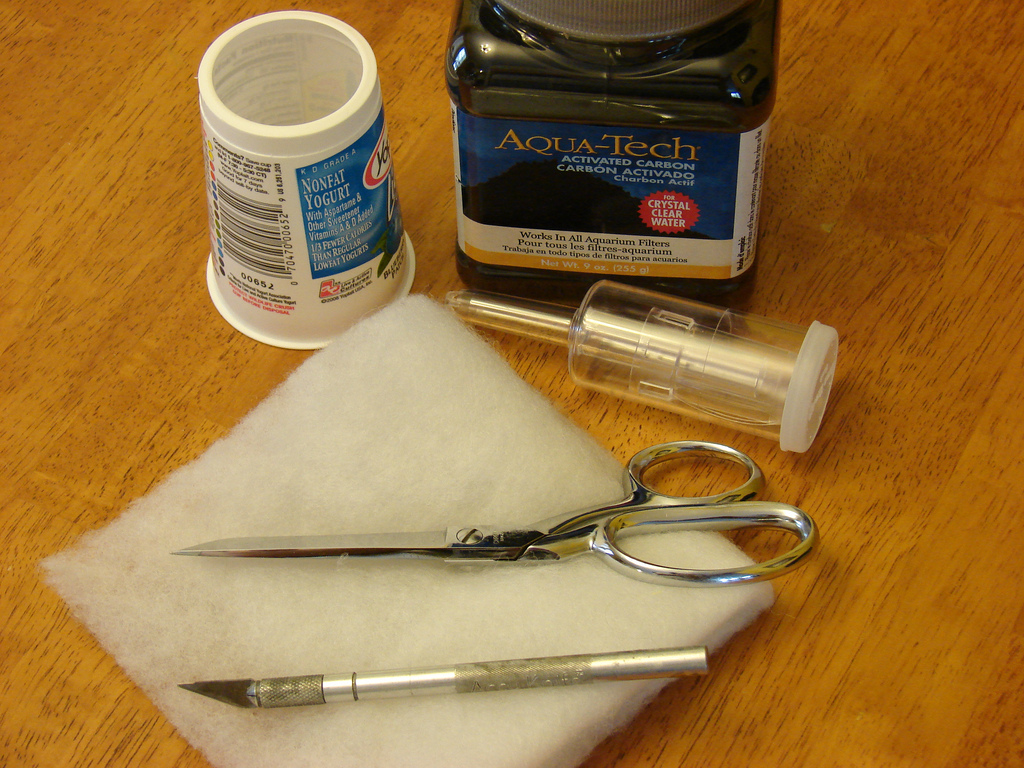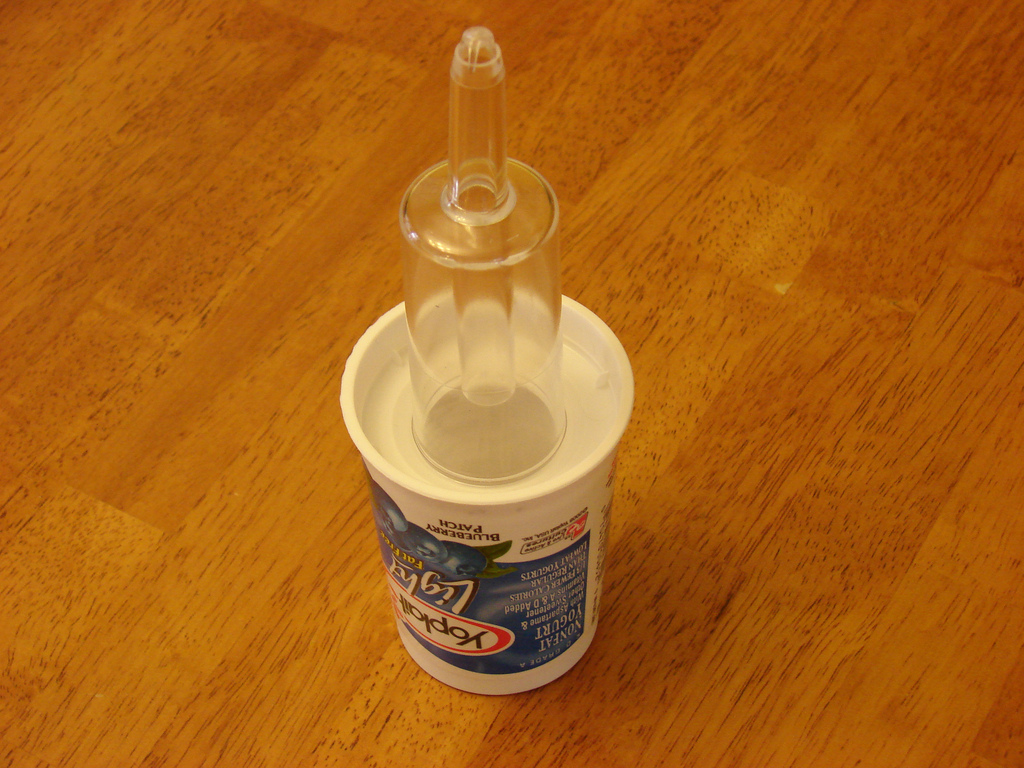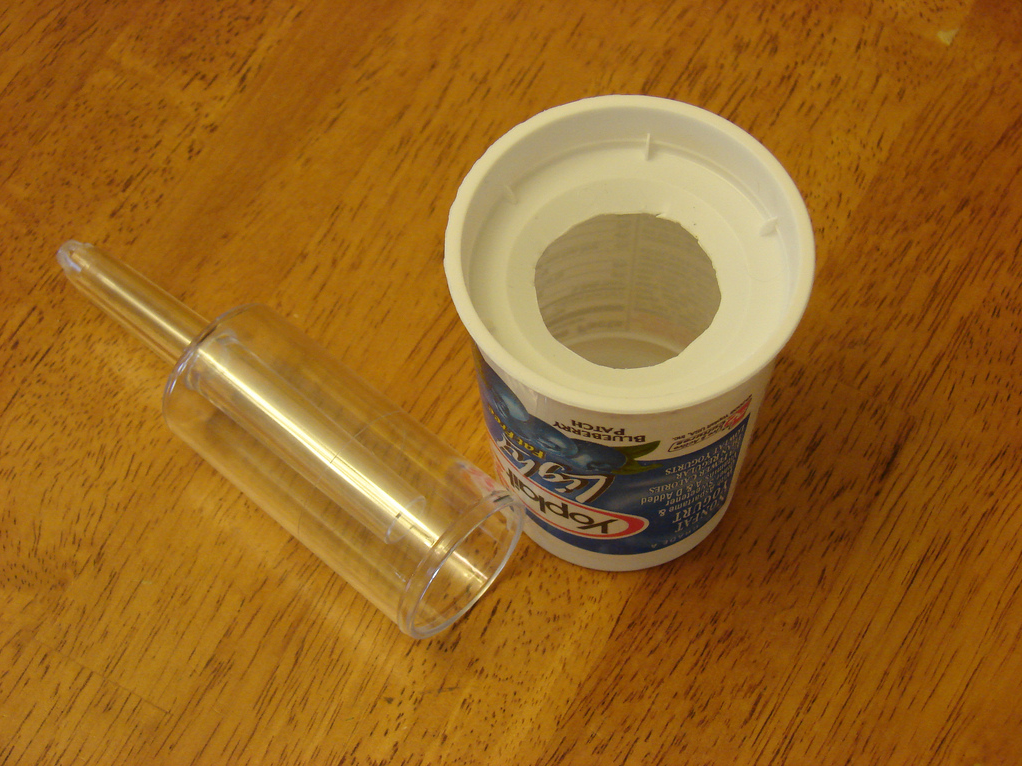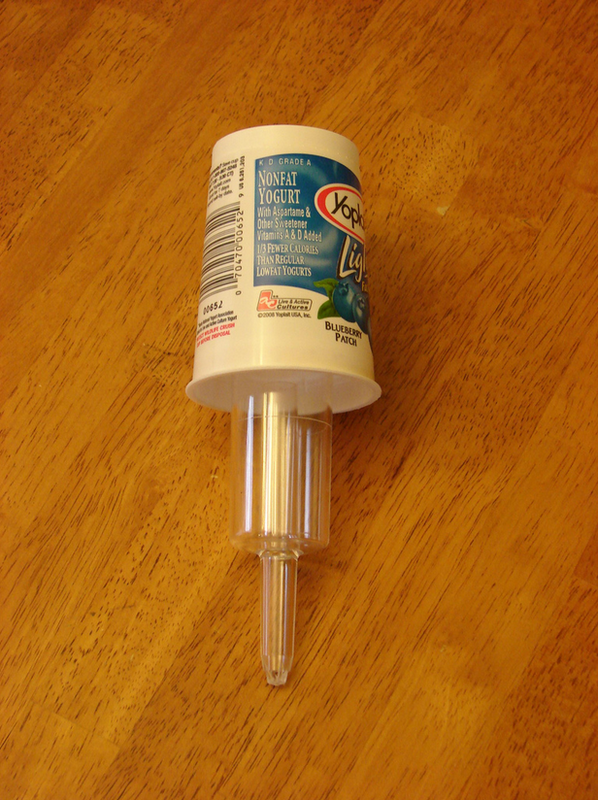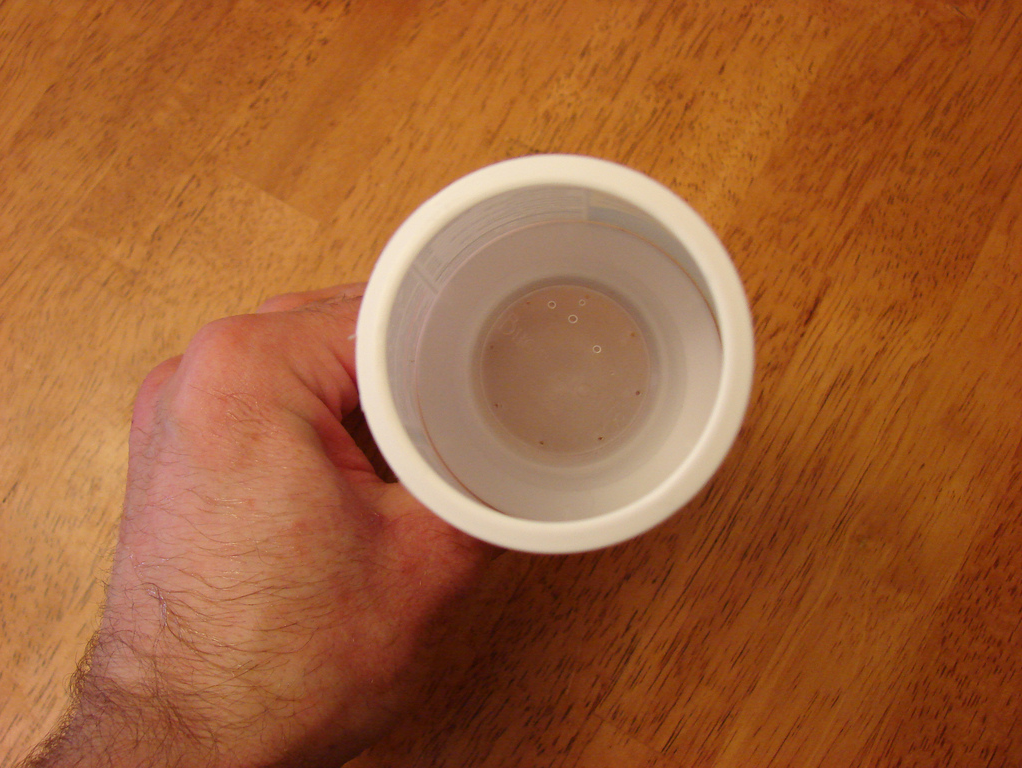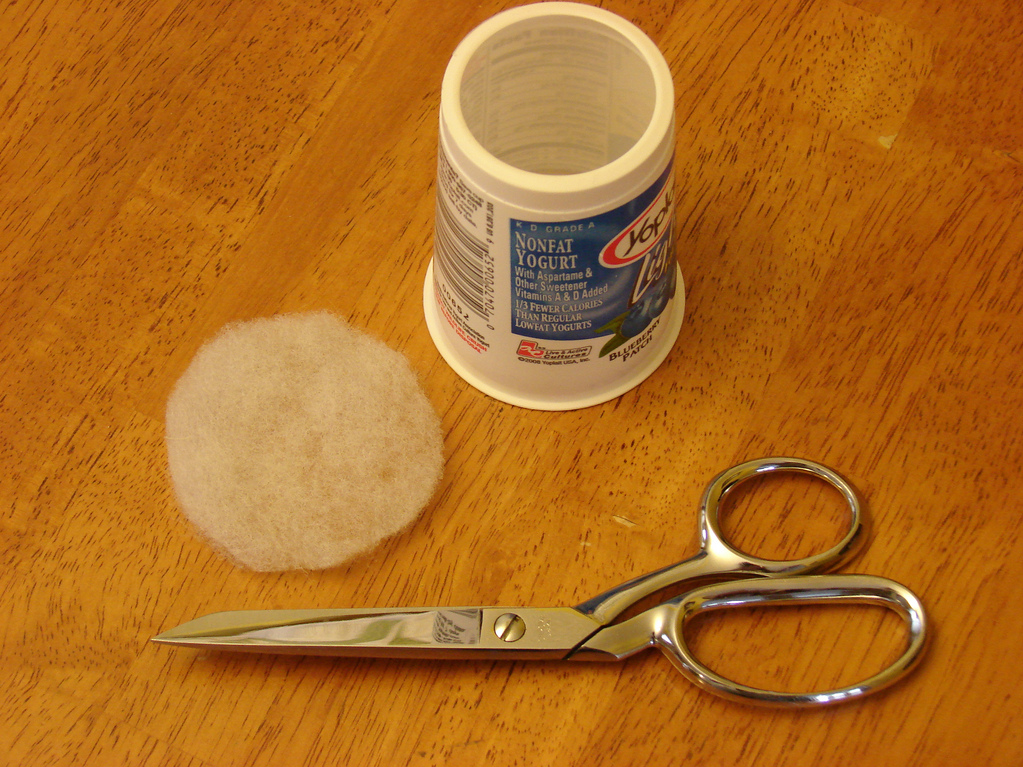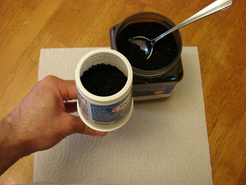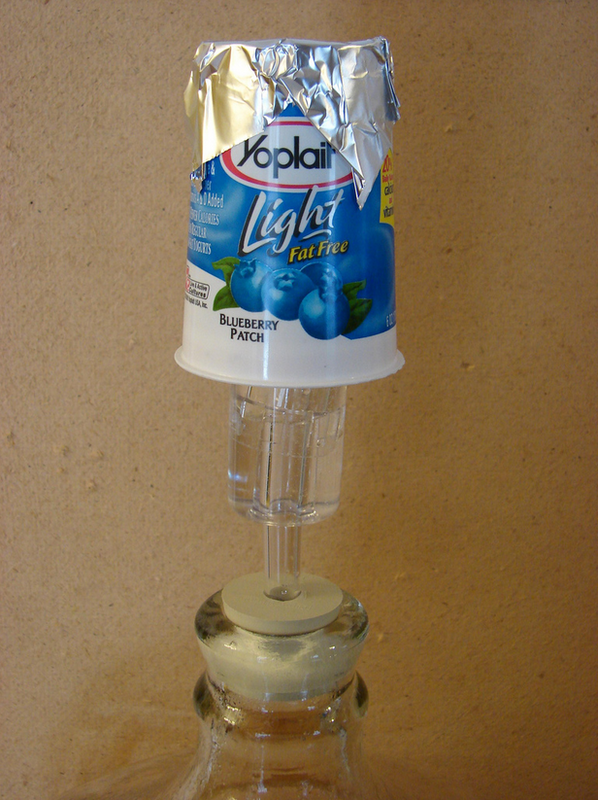Airlock Filter - by Paisano
It would appear that, at least temporarily, I’ve solved the sulfur smell issue created by some batches of fermenting apfelwein.
This is a workable solution for those who are fermenting in a living space or an apartment and want to absorb bad smells for all types of "smelly" yeast.
This is a workable solution for those who are fermenting in a living space or an apartment and want to absorb bad smells for all types of "smelly" yeast.
Gather Supplies
|
Begin Assembly
Assemble & Fill Sulfur Gas Filter with Activated Charcoal
|
Aluminum foil with pin-holes in it allows ODOR-FREE gas to escape while keeping the carbon in the container.
|
My filter has been able to fully scrub the sulfur gas for the duration of the 2-4 day period of sulfur emission. However, you may need to replace the activated charcoal with fresh material in order for it to absorb all of the sulfur gas. Another option would be to use a bit larger container that holds more charcoal. |
If you liked this guide, please have a look around at the rest of our site. We have written many articles on various homebrewing topics as well as showcased lots of DIY projects from around the web. Everything on the site can be found using the navigation menu at the top-left corner of the page.
Here are a few links to get you started:
Process
Equipment > DIY Projects
Cheers!
Here are a few links to get you started:
Process
Equipment > DIY Projects
Cheers!
